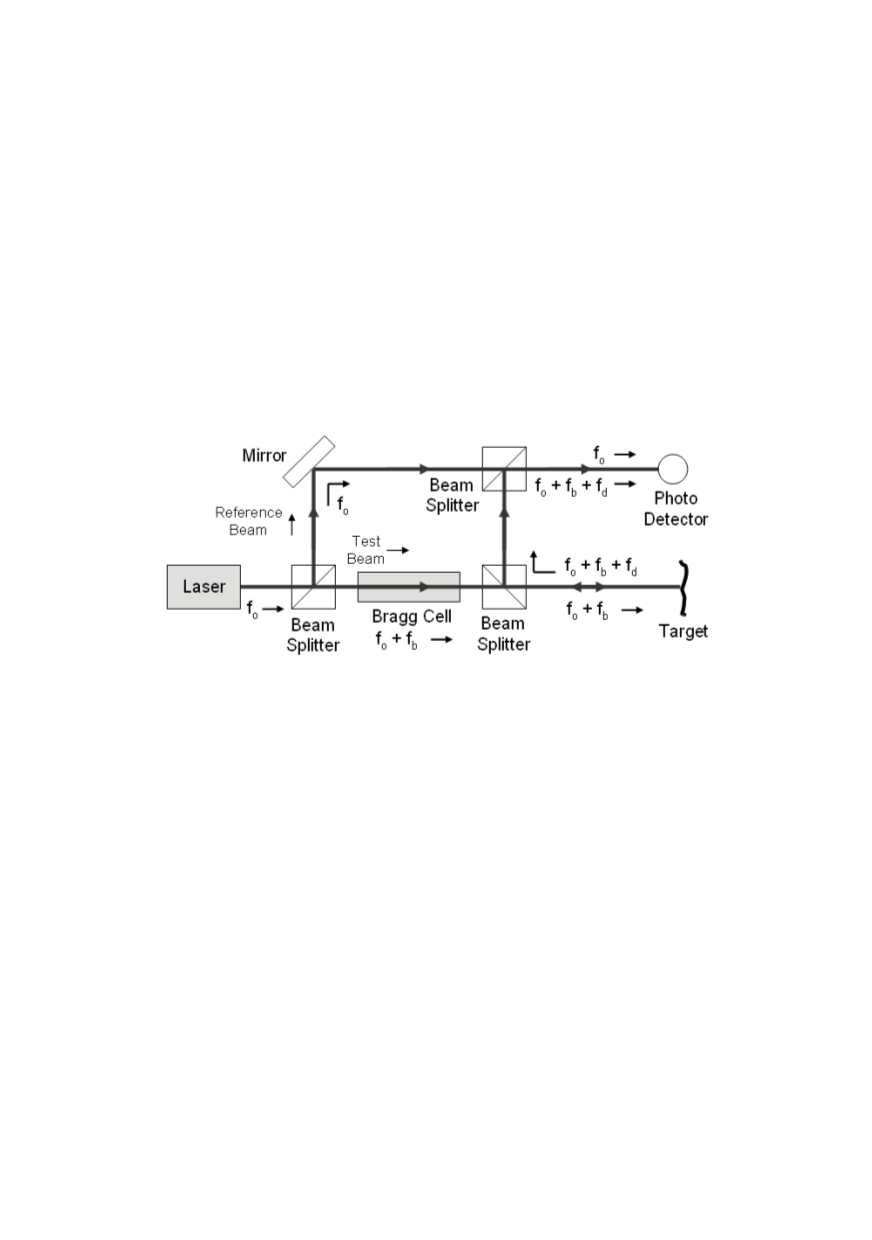

255
measurement the displacements of bridges. It is a difficult task, since bridges are designed
to overpass some distance, mostly over the sea or the river. The use of accelerometer base
measurement technique for evaluating bridge forced vibrations or to perform bridge
modal analysis is already established. The value of acceleration amplitude can be very
low at low frequencies. The limitations with accelerometer application are linked with
transducer types. Installation of the conventional devices for displacement measurement
is difficult and expensive. In addition to already presented global positioning system
(GPS) development and experience for bridge structural health monitoring, Laser Doppler
Vibrometer (LDV) have been suggested as an alternative for displacement measurement
on bridges, producing valuable information for structural integrity assessment.
LDV includes: a laser, a mirror, three beam splitters, a Bragg cell, and a photo
detector, Fig. 13. The mirror reflects the reference beam of laser frequency
f
0
which
passes through the upper beam splitter and adds to the beam from Bragg cell,
f
0
+ f
b
and
adds also to the beam obtained from the target,
f
0
+ f
b
+ f
d
. The mixture is detected by the
photo detector and analysed to give velocity as the result /18/.
Figure 13: Scheme of Laser Doppler Vibrometer (LDV) /18/
Digital image processing techniques as innovative, highly cost-effective and easy to
implement, still maintaining the advantages of dynamic measurements and resolutions. At
first, the measurement point is marked with a target panel of known geometry. A com-
mercial digital video camera is installed on a fixed point beyond the bridge (e.g. on the
coast) or on a pier (abutment), which can be regarded as a fixed point. Then, the video
camera takes a motion picture of the target marked at the measurement point. Meanwhile,
the displacement of the target is calculated using the image processing techniques, which
require the texture recognition algorithms, projection of the captured.
The displacement measurement is more appropriate. Used locations of a bridge for
this purpose can be different, depending on the bridge design, e.g. the lower deck of
bridge can be used, Fig. 14. LDV detects relative vibrations as opposed to the absolute
measures of accelerometer. Some results in field measurements on a highway little bridge
excited by traffic under normal operating systems will be presented through some
pictures. The accelerations measurements were performed by accelerometer for civil
engineering structures and by LDV with a fringe counter board in terms of velocity and
displacement, and have been compared as calculated from LDV signals and the one
directly measured by the accelerometer. The advantages of the laser devices at lower
frequencies are clear and new possibilities are opened to analyse bridge loads in operating
conditions, monitor bridge health, predict fatigue life and improve bridge design.


















